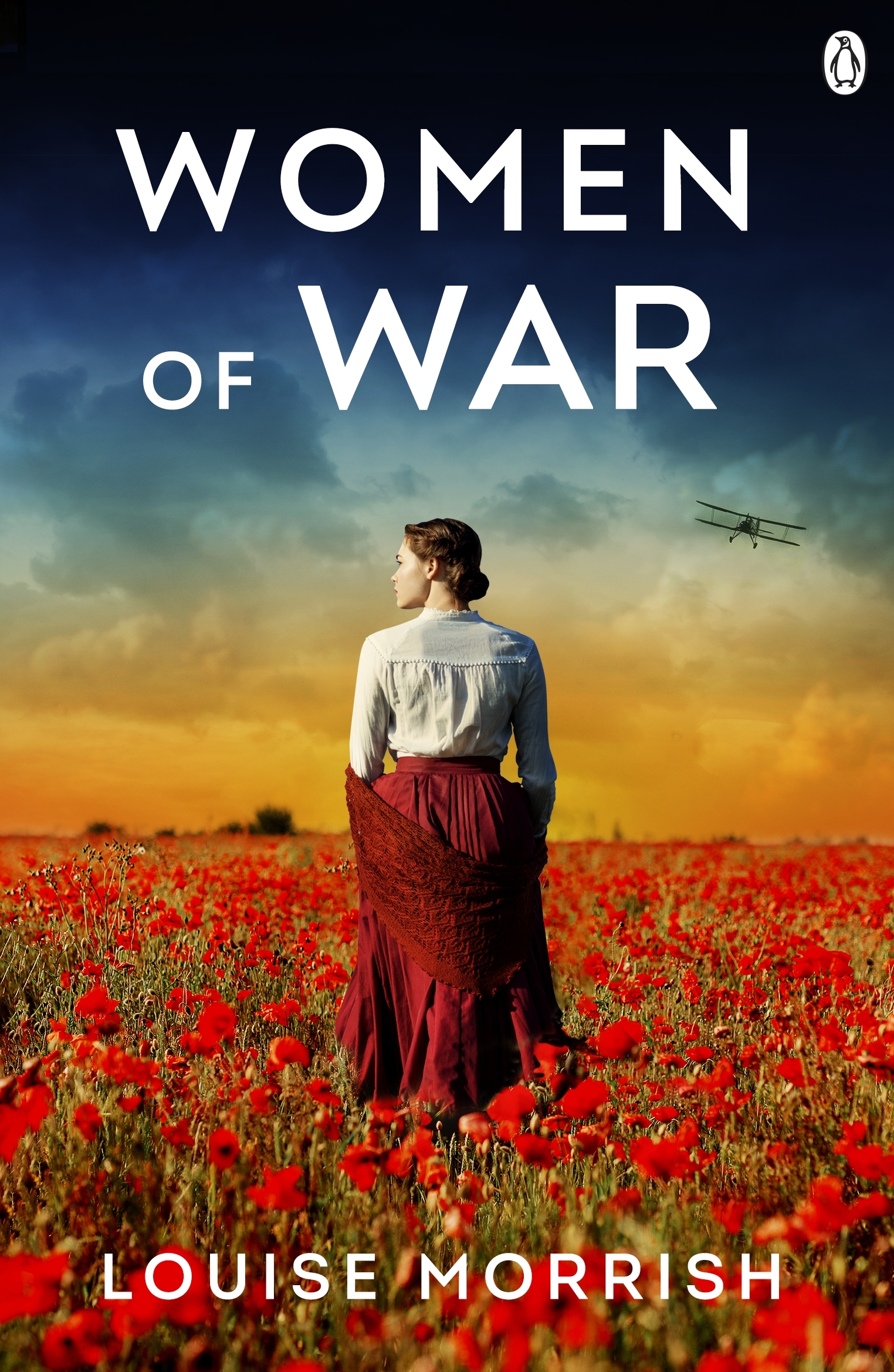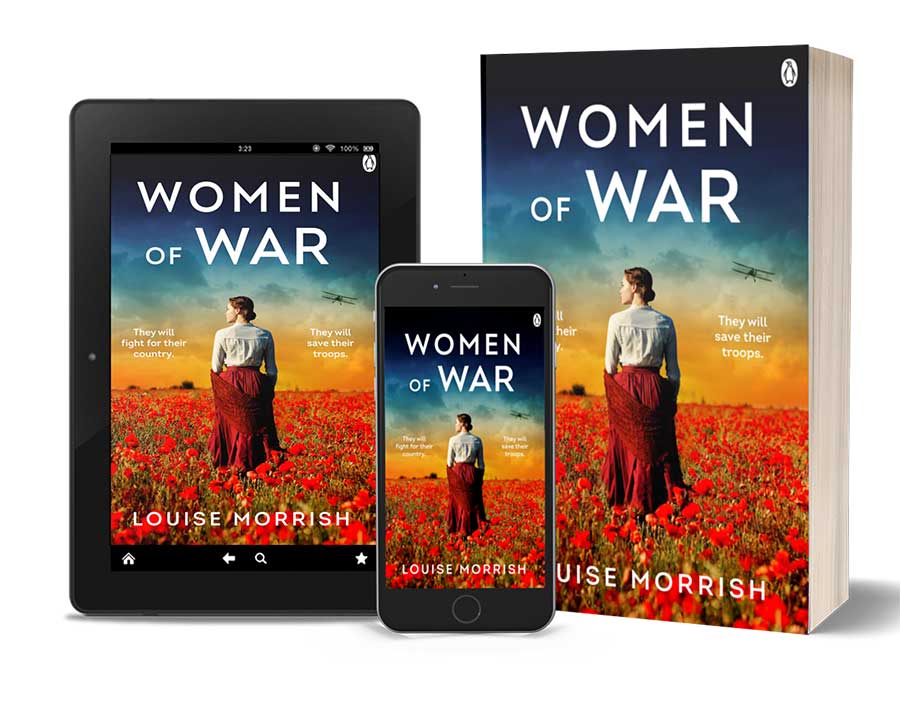Women of War
1914
A surgeon and a soldier go to war – one boldly, one clandestinely. Both are women, and both will change the world…A romantic and deeply moving novel set in the early months of the First World War.
Edie Lawrence has never been one to play by the rules. As war in Europe is declared, she disguises herself as a soldier and enlists with a London regiment, with the aim of becoming the first woman to report from the battlefield. But also where she can catch news of her beloved Nate, who has already been sent to the Front.
Dr Lucinda Garland volunteers her medical services to the War Office. But her offer is met with rejection. Undeterred, she works with the French Red Cross to create a pioneering all-female-run military hospital in Paris. As Lucinda struggles to cope with the horrific injuries that flood her hospital, she finds herself losing her heart to someone unexpected.
And when Edie is injured and her gender revealed on Lucinda’s operating table, the fates of these brave women, each determined to do whatever they can for their country, but also for womankind, intertwine in ways that neither of them could ever have foreseen.
– A masterclass in writing –
Gill Thompson

“I couldn’t put this book down. It’s a beautiful, emotional, and inspiring historical fiction novel that I will be thinking about for a long time. If you’re a fan of strong female characters, historical fiction, or just looking for a story that will stay with you long after you finish it, this is an absolute must-read! ✨📚.”
Goodreads Review
“‘Women of War’ is a beautiful novel: written in pitch-perfect prose and meticulously researched, it’s a fascinating tribute to three real life women from world war one. In Louise Morrish’s story, Edie, Lucinda and Florence emerge as characters of tremendous courage and stoicism, reminding us of the quiet heroism of so many in the darkest of times. The novel is rich in sensuous and historical detail, powerfully plunging us into the world of 1914. Morrish unwinds her narrative skilfully, drawing us into the characters’ lives, their loves, ambitions and dilemmas until reading becomes an immersive and compelling experience. A masterclass in writing, and a wonderful heart-warming story. I thoroughly recommend it..”
Gill Thompson
AUDIO EXTRACT
Book Club Questions
1. How much did you know about the subject of the book before you read it?
2. What surprised you the most about the book?
3. Which elements of the book did you find the most thought-provoking?
4. Did the book change your opinion about anything, or did you learn something new?
5. Who was your favourite character? Were there any characters you particularly liked or disliked?
6. From your point of view, what were the central themes of the book? How well do you think the author explored them?
7. How would you adapt this film into a movie?
8. Who would you cast in the leading roles?
The Inspiration
Women of War is inspired by the real life adventures of two women in World War One.
The first, Dorothy Lawrence, was born in 1896. She longed to be a journalist, but her sex, illegitimacy and lack of education, held her back. Determined to follow her dream, when war broke out in 1914 Dorothy seized the chance to become the first woman to report from the battlefields.
She cycled to France, befriended some Royal Engineers in a rest camp, and with their help disguised herself as a soldier and fought for ten days at the front. I was fascinated by Dorothy’s bravery, and wanted to bring her forgotten story back into the light.
As I began researching the First World War, I discovered another woman, Dr Louisa Garrett Anderson. Her mother, Elizabeth, was the first woman to qualify as a doctor in Britain. Louisa herself was a surgeon, and when war broke out in 1914, she and her anaesthetist colleague and partner Flora Murray offered their services to the War Office. They were rejected as unfit for military surgery, simply because they were women.
Undeterred, Louisa and Flora approached the French Red Cross who gratefully accepted their help. The two women went on to create all-female-run military hospitals in France and England, and I knew their story also had to be told.

Staff of the Endell Street Military Hospital, August 1916
The Characters
‘Women of War’ is a dual-storyline novel. One strand follows Edie, a young suffragette and would be journalist, based on the real Dorothy Lawrence. The other strand follows Lucinda, a doctor inspired by the real life, pioneering Dr Louisa Garrett Anderson. Supporting characters, such as Orderly Mardie Hodgson, and war correspondent Harry Levinson are also inspired by real people. Sylvia, Edie’s suffragette friend, is based on the infamous Sylvia Pankhurst, daughter of Emmeline Pankhurst, and member of the Women’s Social and Political Union.

Claridge’s Hotel, Paris
See page for author, CC BY 4.0, via Wikimedia Commons
WOMEN CARRYING STRETCHER, ENDELL ST.
The Research
Historical fiction is my favourite genre, largely because I love the research. I immersed myself in the First World War to write ‘Women of War’, reading upwards of 100 books on the subject, and travelling to France and Belgium.
I visited museums such as the Imperial War Museum and the Museum of Military Medicine, archives such as the British Library and Aldershot Military Library, and locations including Endell Street in London where Louisa and Flora created one of their military hospitals.
The challenges that Edie and Lucinda encounter are based on actual events.






